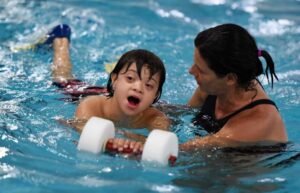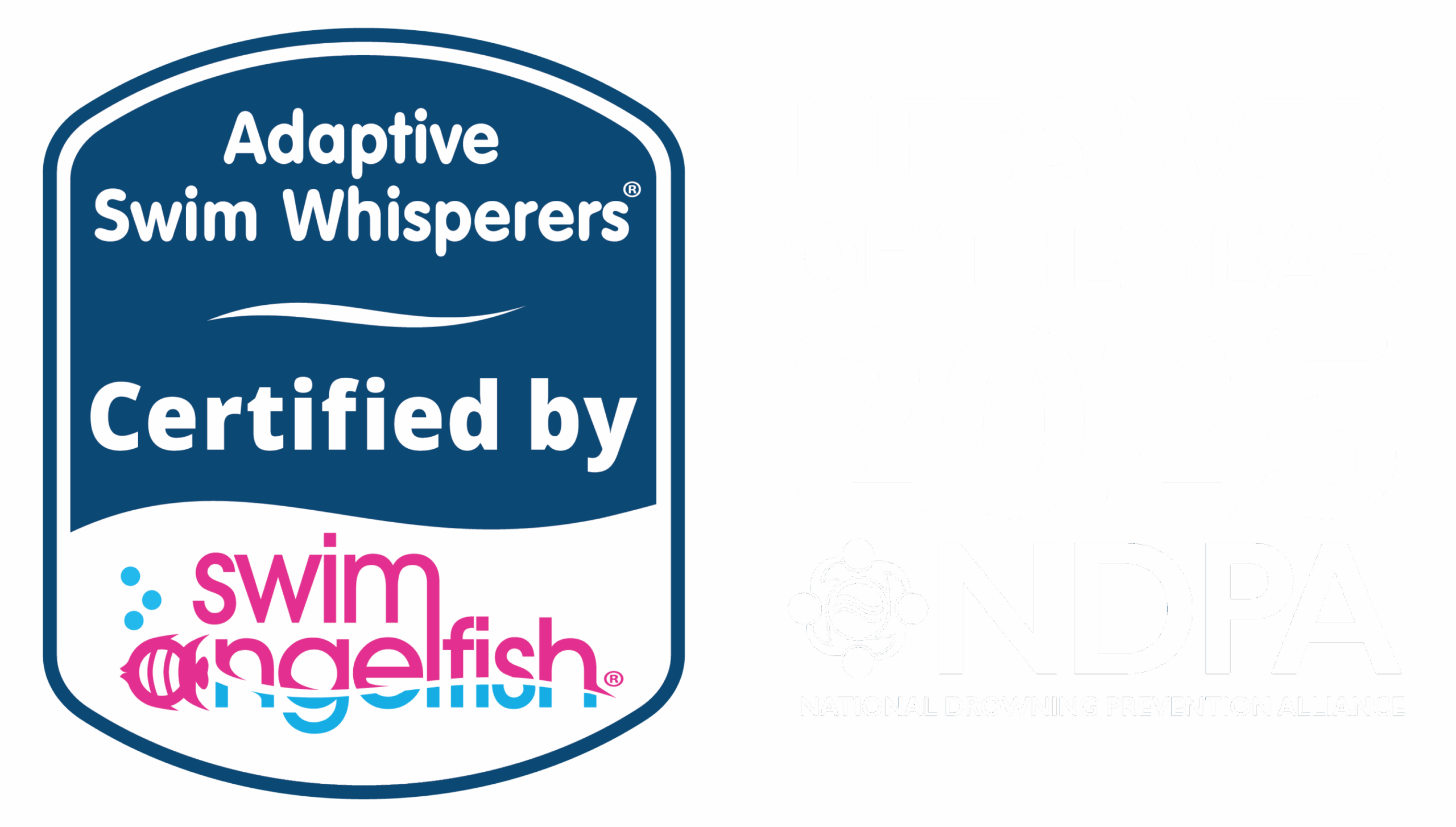Article from Sensory Integration International
*This was orginally an article published in Sensory Integration International.
Jump into your suit, grab your coffee and leave for work! This daily ritual takes on a very literal meaning if you choose to work in the water with children on the spectrum. Many of us have experienced the sensory seeking child who loves the pool. Let’s talk about this phenomenon first.
The hydrostatic pressure of the water provides a blanket of deep pressure to the child’s largest organ: the skin. Because she is in a swim suit, the skin is exposed to the viscous fluid, giving CNS messages about where the body is in space. Unique properties of the water allow children to work on developmental skills such as crawling, walking, rolling and jumping. Buoyancy can assist, support or resist, depending on the therapy goal. The child who likes his bath and has had positive experiences in the pool will be highly motivated to learn in the aquatic environment.
Motor planning, self-regulation, speech, oral motor control, strength and coordination are just a few areas that are likely to improve as a result of therapy in the water. A typical scenario may be the child who arrives shaking his hands, walking on his toes and diverting his gaze, but leaves the session organized and ready for the next routine. Often, children of all abilities are scheduled for academic, behavior and ot/pt/slp following a pool session because of their improved ability to engage and participate.
When a child feels happy and confident in the water, it is time to increase the demand by adding a partner. This provides the opportunity to incorporate social interaction and interpersonal skill acquisition. Children can copy each other, trade toys, offer ‘high fives’ to one another and work together while talking, pointing and using gestures for play. Even better, when the pool activities are well established, a third child could be added. The result is a group of three children who are having fun while working on a variety of skills: vestibular, proprioception, social interaction, motor planning, core strengthening, re-patterning of reflexes, respiration, cognitive skills and much more. Often, this small group provides a bridge to genuine leisure activity, a swim class in which they are integrating with their peers.
Let’s switch gears and talk about the opposite type of child. Your family wants to swim but no matter what you try, your little buddy is clinging for life around your neck, screaming, “Take me to where I can touch my feet.” Gravity is gone and he is not staying in for long. Techniques for grounding and helping your child understand the absence of gravity will most likely get those fingernails out of your neck. Sequenced systematic activities with weights or canvas shoes can therapeutically provide the feedback that avoids the fight or flight response. Parents and other people working in the water with this child need to accept that once a fight or flight response begins, neurochemistry kicks in. It is as if someone is following you and you feel like you are about to get robbed. You feel your body heating up, preparing to defend. This is the feeling your child is experiencing! No one can learn to swim, enjoy the water or participate in therapy in this mode. How do we help him to learn where his body is in space? The properties of the water are just as powerful for this child, but require different ritual, routine, social stories and firm progression.
Some kids really want to be in the water but their system works against them. Giving the vestibular and proprioceptive systems the input they need to guide the progression, is key to their success. Cadence, rhythm and timing of movement, is crucial to arousing the necessary centers for cooperation. Whether the avoiding response is severe or mild it is important to work with someone who understands what this adverse response is all about.
One child may need one OT or PT session with the appropriate progression; others may need several. For example, a child recently attended a set of 6 private swim sessions at a private swim school. This nonverbal, 7-year- old, child with autism endured 2 sets of these sessions (12 times). When the instruction did not work, the parents were told the swim instructor had done everything they knew how to do. This child is a perfect candidate for a different approach with a trained aquatic therapist who understands the properties of the water and how they affect a child with sensory processing dysfunction. Another child may have attended years of swimming but has a specific issue, i.e., putting her face in the water. An experienced aquatic therapist can help her overcome this sensory aversion of water splashing on her face, alleviating her fear of submerging.
An eclectic treatment approach encompassing many different frames of reference in the water will result in children who not only enjoy the water but are able to participate in a leisure/recreation activity with peers. Brainstorming pool sessions regarding the incorporation of approaches such as reflex re-patterning, play project techniques, sensory integration and NDT result in individualized therapeutic responses to each child’s specificity. Working as OT/PT teams, aquatic therapists examine movement, experiment with equipment and handling while sharing ideas and observations. This cooperative approach is crucial for the creation of the aquatic tool box and learned tricks of the trade that will help children enjoy the water. The pool provides options for private, semi-private and small group therapy. Children can work parallel with noodles and dumbbells, retrieving objects while lying on their bellies, then sitting up and giving them to the therapist, or throwing them on the command of, “ready, set, go!” Eventually, this parallel play evolves into the kids trading objects. Small groups form when the goals change.
A parent may want strength, coordination, endurance and social skills as they relate to the swimming experience for their child. Together, a swim instructor and therapist can provide the specific combination of activities that will improve motor planning while motivating social skills. Many parents describe the bridge that this provides from therapy to community as miraculous. They exclaim, “My son has limited language and now he is on the swim team!” Additionally, many parents rave about an amazing family vacation because their child swam every day, even engaged others in the pool. More importantly, the child was at an optimal level of arousal, able to participate in family activities throughout the day, minus usual difficulties. Stories like theses will keep you marinating in the pool.
Splashingly,
Cindy Freedman
Ailene Tisser
Angelfish Therapy, LLC
Angelfish Therapy is an OT/ PT team of therapists who specialize in aquatic therapy.



